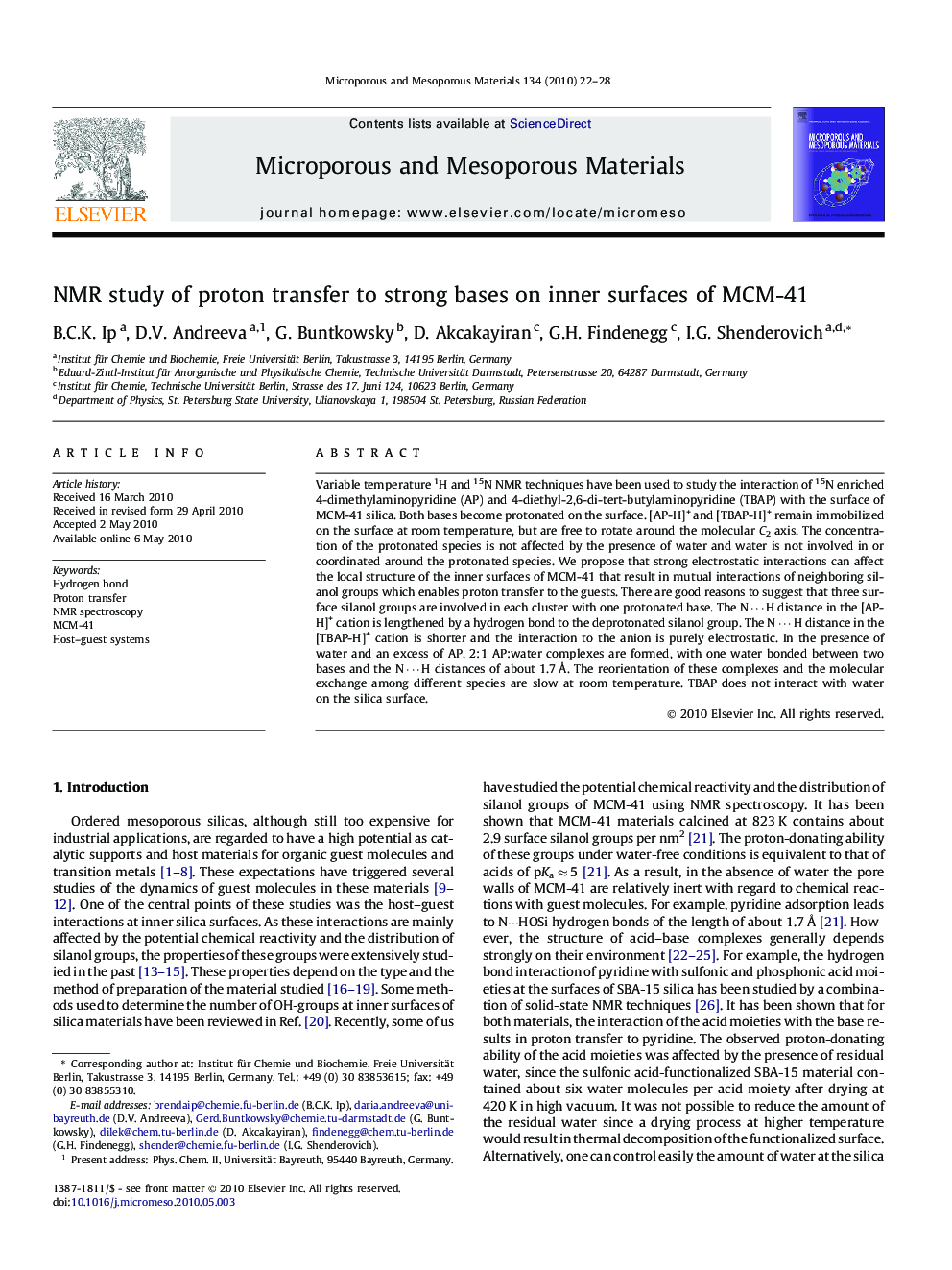| کد مقاله | کد نشریه | سال انتشار | مقاله انگلیسی | نسخه تمام متن |
|---|---|---|---|---|
| 75384 | 49114 | 2010 | 7 صفحه PDF | دانلود رایگان |

Variable temperature 1H and 15N NMR techniques have been used to study the interaction of 15N enriched 4-dimethylaminopyridine (AP) and 4-diethyl-2,6-di-tert-butylaminopyridine (TBAP) with the surface of MCM-41 silica. Both bases become protonated on the surface. [AP-H]+ and [TBAP-H]+ remain immobilized on the surface at room temperature, but are free to rotate around the molecular C2 axis. The concentration of the protonated species is not affected by the presence of water and water is not involved in or coordinated around the protonated species. We propose that strong electrostatic interactions can affect the local structure of the inner surfaces of MCM-41 that result in mutual interactions of neighboring silanol groups which enables proton transfer to the guests. There are good reasons to suggest that three surface silanol groups are involved in each cluster with one protonated base. The N⋯HN⋯H distance in the [AP-H]+ cation is lengthened by a hydrogen bond to the deprotonated silanol group. The N⋯HN⋯H distance in the [TBAP-H]+ cation is shorter and the interaction to the anion is purely electrostatic. In the presence of water and an excess of AP, 2:1 AP:water complexes are formed, with one water bonded between two bases and the N⋯HN⋯H distances of about 1.7 Å. The reorientation of these complexes and the molecular exchange among different species are slow at room temperature. TBAP does not interact with water on the silica surface.
Journal: Microporous and Mesoporous Materials - Volume 134, Issues 1–3, October 2010, Pages 22–28